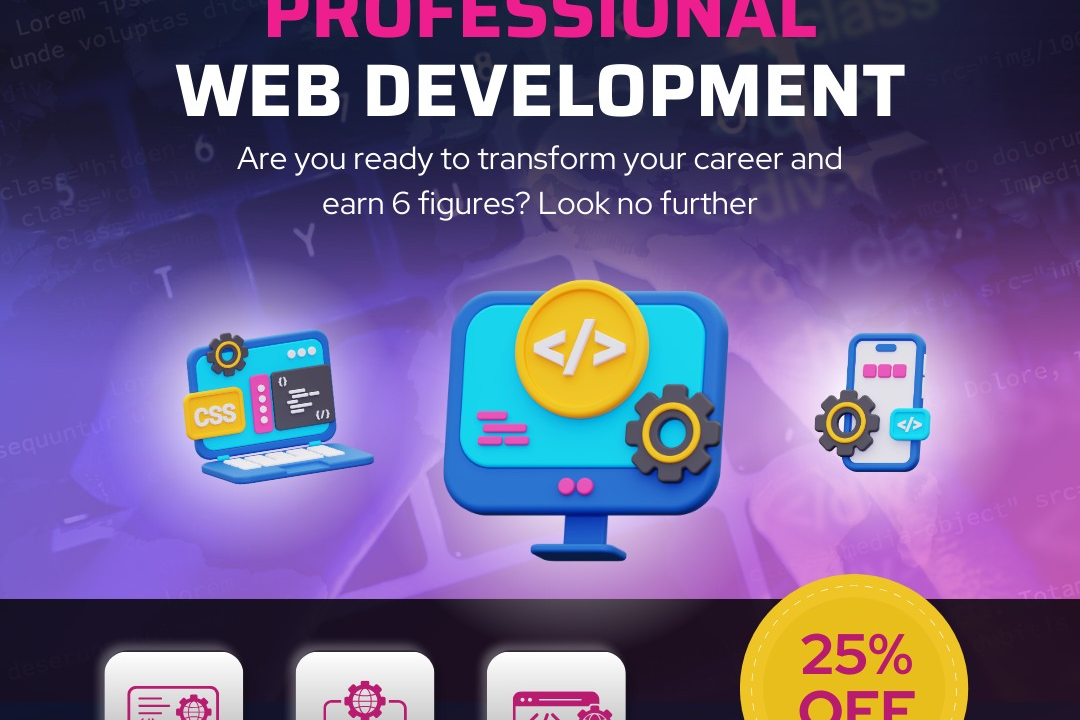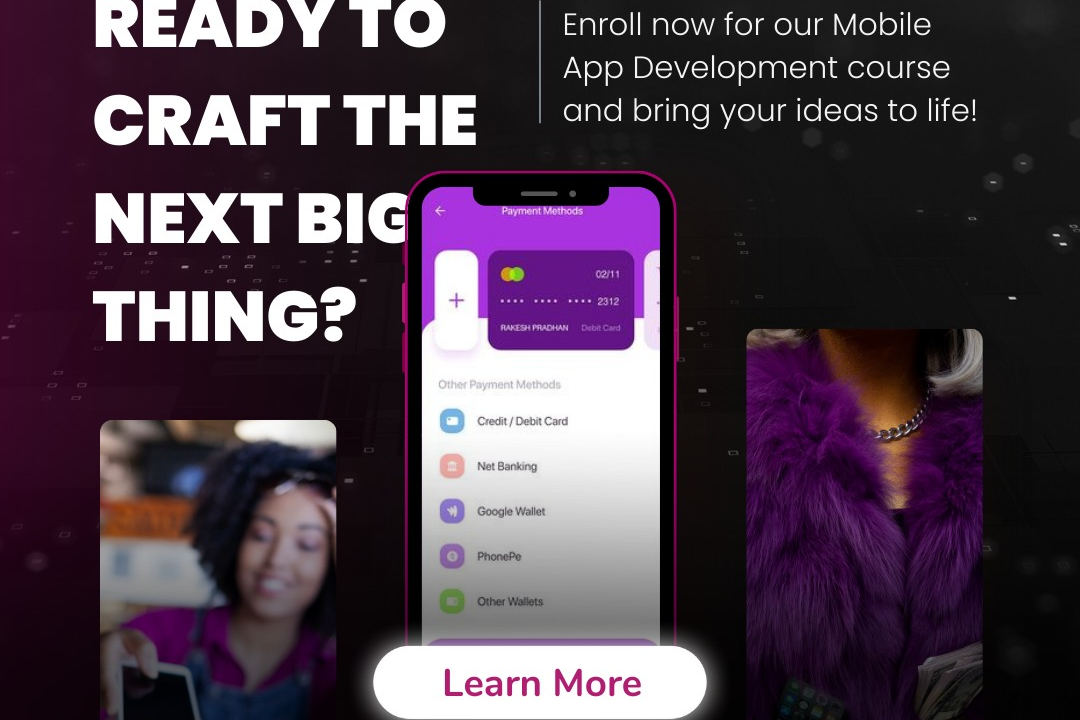execute a php program in USB XAMPP
Executing a PHP program from a USB drive using XAMPP on Windows involves running a portable web serv
execute a php program in USB XAMPP
Executing a PHP program from a USB drive using XAMPP offers a portable and flexible development environment, allowing developers to run and test PHP applications on any Windows computer without installing additional software. This approach is especially useful for troubleshooting, demonstrations, and educational purposes, as it enables quick setup and eliminates dependency on the host system’s configurations. With XAMPP on a USB, users can carry their projects anywhere, ensuring consistent testing conditions and streamlining workflows, making it an efficient solution for mobile development and on-the-go learning.
To Download Our Brochure: https://www.justacademy.co/download-brochure-for-free
Message us for more information: +91 9987184296
Executing a PHP program from a USB drive using XAMPP offers a portable and flexible development environment, allowing developers to run and test PHP applications on any Windows computer without installing additional software. This approach is especially useful for troubleshooting, demonstrations, and educational purposes, as it enables quick setup and eliminates dependency on the host system’s configurations. With XAMPP on a USB, users can carry their projects anywhere, ensuring consistent testing conditions and streamlining workflows, making it an efficient solution for mobile development and on the go learning.
Course Overview
This course teaches you how to run PHP programs directly from a USB drive using XAMPP, enabling portable and efficient local server setup for testing and development without permanent installation.
Course Description
Learn how to run PHP programs directly from a USB drive using XAMPP, enabling portable local server setup for testing and development without installing software on your system.
Key Features
1 - Comprehensive Tool Coverage: Provides hands-on training with a range of industry-standard testing tools, including Selenium, JIRA, LoadRunner, and TestRail.
2) Practical Exercises: Features real-world exercises and case studies to apply tools in various testing scenarios.
3) Interactive Learning: Includes interactive sessions with industry experts for personalized feedback and guidance.
4) Detailed Tutorials: Offers extensive tutorials and documentation on tool functionalities and best practices.
5) Advanced Techniques: Covers both fundamental and advanced techniques for using testing tools effectively.
6) Data Visualization: Integrates tools for visualizing test metrics and results, enhancing data interpretation and decision-making.
7) Tool Integration: Teaches how to integrate testing tools into the software development lifecycle for streamlined workflows.
8) Project-Based Learning: Focuses on project-based learning to build practical skills and create a portfolio of completed tasks.
9) Career Support: Provides resources and support for applying learned skills to real-world job scenarios, including resume building and interview preparation.
10) Up-to-Date Content: Ensures that course materials reflect the latest industry standards and tool updates.
Benefits of taking our course
Functional Tools
1 - XAMPP Control Panel: The XAMPP control panel is the central management interface for starting, stopping, and configuring the Apache server, MySQL database, and other components required for PHP development. It provides an easy to use graphical interface that simplifies server management tasks, allowing students to ensure their local web server is running smoothly. By mastering this tool, students can efficiently manage their environment, troubleshoot issues, and customize settings to optimize performance during their training sessions.
2) Portable USB Drive: The portable USB drive serves as the physical platform for creating a portable PHP environment. Students learn how to install and configure XAMPP onto a USB device, making their development environment mobile and independent of the host system. This tool is crucial for practicing real world scenarios like offline development, client demonstrations, and environment portability, which are essential aspects of modern web development workflows.
3) PHP IDE or Text Editor (such as Sublime Text, VS Code, Notepad++): These integrated development environments (IDEs) or text editors are essential for writing, editing, and debugging PHP code. During the course, students acquire skills in using these tools to develop clean and efficient scripts. The course emphasizes debugging features, syntax highlighting, and code management, enabling learners to enhance productivity and write error free code in their portable environment.
4) File Transfer and Synchronization Tools: Applications like WinSCP or FileZilla are used to transfer files between the local workstation and USB drive or remote servers. Students learn how to efficiently synchronize project files, back up their work, and collaborate with others. These tools reinforce best practices for version control and data management, crucial for maintaining project integrity during their training.
5) Version Control Systems (Git): Git is introduced as a vital tool for tracking changes, managing different versions of code, and collaborating in teams. Students learn how to initialize repositories, commit changes, and push updates, even within the portable environment. Mastering Git helps them develop disciplined coding habits and prepares them for professional workflows involving code management and collaboration.
6) Command Line Interface (CLI): The course covers basic command line operations for managing the server environment, running scripts, and troubleshooting issues. Students learn commands for navigating directories, starting and stopping services, and executing PHP scripts directly from the terminal. Familiarity with CLI enhances their technical proficiency and allows more efficient environment control, especially when GUI options are limited.
7) Database Management Tools (phpMyAdmin): phpMyAdmin provides an intuitive interface for managing MySQL databases within XAMPP. Students learn to create, modify, and query databases, which are integral to dynamic PHP applications. The course emphasizes best practices in database design, security, and data integrity, enabling learners to build robust back end systems in their portable setups.
8) Web Browsers (Chrome, Firefox, Edge): These browsers are used to test and view PHP applications locally. Students learn how to access their projects via localhost, perform debugging, and test application functionality across different browsers. Understanding browser developer tools further enhances their ability to troubleshoot and optimize web applications during training.
9) Editing and Debugging Tools: Tools such as XDebug or built in IDE debuggers are introduced for step by step code debugging. Students learn to set breakpoints, inspect variables, and trace code execution to identify errors efficiently. This skill is vital for writing bug free applications and understanding complex code behavior in real time projects.
10) Backup and Recovery Software: Students are trained on using backup tools and scripts to safeguard their portable environment and project files. These tools help ensure data safety, facilitate easy restoration in case of corruption or data loss, and teach good practices for maintaining their development environment securely over time.
11 - Additional Plugins and Extensions: Various plugins for IDEs and browsers are introduced to enhance functionality, such as code formatting, syntax checking, or performance monitoring. These tools help learners streamline their workflow, write better code, and maintain consistency throughout their development process.
12) Virtualization Software (e.g., VirtualBox, VMware): Virtualization tools allow creating isolated virtual environments for testing and development. Students learn how to set up virtual machines pre configured with PHP and database stacks, enabling them to simulate different server environments and practice deployment scenarios without affecting their host system.
13) Containerization Platforms (e.g., Docker): Docker enables students to package their PHP applications along with all dependencies into containers. This promotes portability, consistency across development, testing, and production environments, and teaches best practices for application deployment in modern DevOps workflows.
14) SSL/TLS Certificate Tools: During the course, learners explore generating self signed SSL certificates to run HTTPS locally. This experience is crucial for understanding secure communication, implementing SSL in web applications, and preparing for security compliance in real world projects.
15) Performance Monitoring Tools (e.g., Chrome DevTools, Firebug): These tools provide insights into webpage performance, including load times, resource usage, and responsiveness. Students learn how to optimize their PHP applications for speed and efficiency, essential for user experience and scalability.
16) Content Management Systems (CMS) Setup: Learning how to install and configure popular CMS platforms (like WordPress, Joomla, or Drupal) on their local environment helps students understand content management workflows, theme customization, and plugin development, broadening their practical skills.
17) Testing Frameworks (PHPUnit): Introducing testing tools enables students to write unit tests and automate application testing. This promotes best practices for code quality, reduces bugs, and prepares learners for continuous integration workflows.
18) Collaboration Platforms (e.g., GitHub, GitLab): Students learn how to host their code repositories online, collaborate with teammates, and manage issues or feature requests. These platforms facilitate team based project development, version control, and open source contribution skills.
19) Monitoring and Logging Tools: Tools like Loggly or Graylog help students understand how to monitor their applications, gather logs, and troubleshoot runtime issues. This experience prepares them for maintaining large scale applications and ensuring reliability.
20) Automated Deployment Tools: Introduction to continuous deployment tools such as Jenkins or GitHub Actions allows students to automate the deployment process, reducing manual effort and minimizing errors during deployment phases of their projects.
21 - Code Quality Analysis Tools: Integrating static code analyzers like PHPCS or PHPStan helps students enforce coding standards, detect potential errors early, and improve overall code maintainability and professionalism.
22) Security Testing Tools: Tools like OWASP Zap or Nikto are introduced for testing web application security vulnerabilities. This knowledge enables students to develop secure PHP applications and understand common threats and mitigation strategies.
23) Cloud Storage Integration: Students learn to connect their development environment with cloud storage services like Google Drive or Dropbox for seamless data backup, sharing, and collaboration, emphasizing cloud based workflows.
24) Advanced Database Tools: Techniques like database schema visualization, query optimization, and replication setup using tools such as MySQL Workbench enhance their database management skills, crucial for scaling and securing data intensive applications.
25) Remote Access and VPN Tools: Training on remote desktop access, VPN setup, and secure connections ensures students can work securely from various locations and collaborate with clients or team members across different regions.
26) Performance Testing and Load Simulation Tools: Introducing tools like Apache JMeter helps students simulate traffic loads and analyze application performance under stress conditions, preparing them for real world high traffic scenarios.
27) Analytics and User Tracking Tools: Incorporating tools such as Google Analytics or Matomo allows students to integrate analytics into their applications, enabling insights into user behavior and data driven decision making.
28) Mobile Testing Tools: Learning to test PHP applications for mobile responsiveness and device compatibility ensures that students can develop versatile applications suitable for various platforms and screen sizes.
29) Compliance and Legal Tools: Overview of tools for managing privacy policies, GDPR compliance, and data protection practices ensures students develop applications adhering to legal standards and best practices.
30) Documentation Tools: Using markdown editors, Wikis, or documentation generators teaches students to create comprehensive project documentation, fostering good communication and project management skills.
Browse our course links : https://www.justacademy.co/all-courses
To Join our FREE DEMO Session:
This information is sourced from JustAcademy
Contact Info:
Roshan Chaturvedi
Message us on Whatsapp:
Email id: info@justacademy.co












